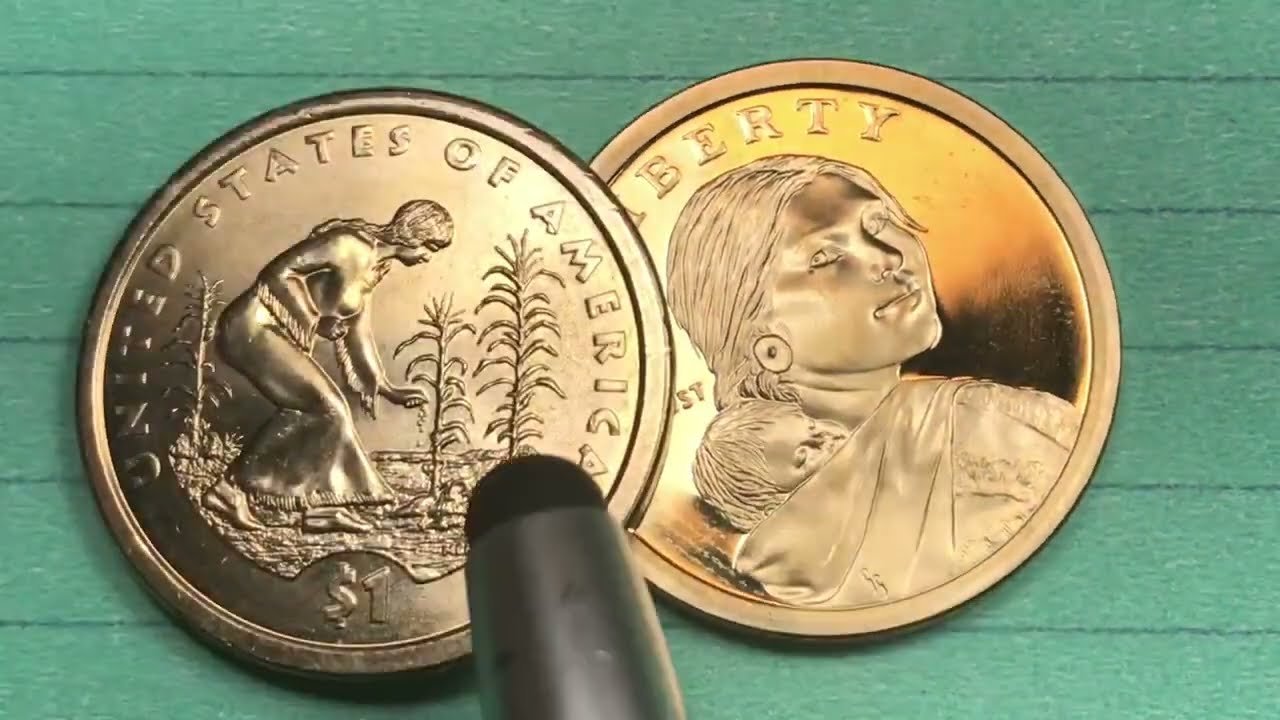Sacagawea Dollars For years, Sacagawea dollars from the early 2000s were considered ordinary pocket change. Minted in large numbers, these golden-colored coins often went unnoticed by the public. But in recent months, collectors and history enthusiasts have been paying closer attention to these coins, sparking renewed interest in their cultural value and potential rarity.
A Coin with a Story
The Sacagawea dollar was first issued in 2000 by the U.S. Mint. It was designed to replace the Susan B. Anthony dollar, which struggled with public acceptance. Featuring Sacagawea, the Shoshone woman who helped guide Lewis and Clark, the coin honored Native American contributions to American history.
The design, created by artist Glenna Goodacre, quickly stood out for its golden appearance, achieved through a unique alloy of copper, manganese, brass, and nickel. Though visually striking, the coin never became widely used in daily transactions, leaving many examples in mint condition.
Why the Early 2000s Issues Stand Out
The first few years of Sacagawea dollar production have gained attention for several reasons. Coins minted between 2000 and 2002 are now seen as the most collectible, largely because of their historical significance as the launch years of the series.
Some versions, such as the 2000 “Cheerios Dollar,” distributed in cereal boxes as a promotional campaign, are considered highly valuable due to a special design on the eagle’s tail feathers. These variations are rare and can be worth far more than their face value.
In addition, limited circulation and public hesitation to use dollar coins mean that many early 2000s Sacagawea dollars remain preserved in excellent condition, making them attractive to collectors today.
Collectors’ Renewed Interest
The spotlight on Sacagawea dollars has also been fueled by a broader trend in coin collecting. As people search through old savings jars, coin rolls, and family collections, these golden dollars often appear. Their unique design and connection to American history add to their appeal.
Numismatic forums and auction results show a rise in discussions about the coins, with certain varieties drawing significant bids. While not every Sacagawea dollar is rare, the possibility of owning a valuable variety keeps interest alive.
More Than Just Money
Beyond their collector value, Sacagawea dollars carry cultural importance.Sacagawea Dollars The decision to feature Sacagawea with her infant son was a symbolic gesture, recognizing Native American history in a way that U.S. currency had rarely done before. For many, the coins serve as a reminder of inclusivity and the diverse stories woven into America’s past.
The Outlook Ahead
As interest grows, Sacagawea dollars from the early 2000s are likely to remain in demand among collectors. While most will continue to trade close to face value, certain varieties and well-preserved examples may see their worth climb over time.
Whether discovered in pocket change, tucked away in a desk drawer, or kept in a coin album, Sacagawea Dollars these dollars remind Americans that even ordinary coins can hold extraordinary stories.
FAQs
Why are Sacagawea dollars golden in color?
They were made from a copper core with a manganese-brass cladding, giving them their distinctive golden hue.
Are all early 2000s Sacagawea dollars valuable?
No. Most are worth face value, but special varieties like the 2000 Cheerios Dollar or coins in pristine condition can be worth more.
Where can people find these coins today?
They sometimes appear in circulation, but many are found in old collections, coin rolls from banks, or online marketplaces.
What makes the 2000 Cheerios Dollar special?
It features an enhanced design on the eagle’s tail feathers, making it distinct and rare compared to standard versions.
